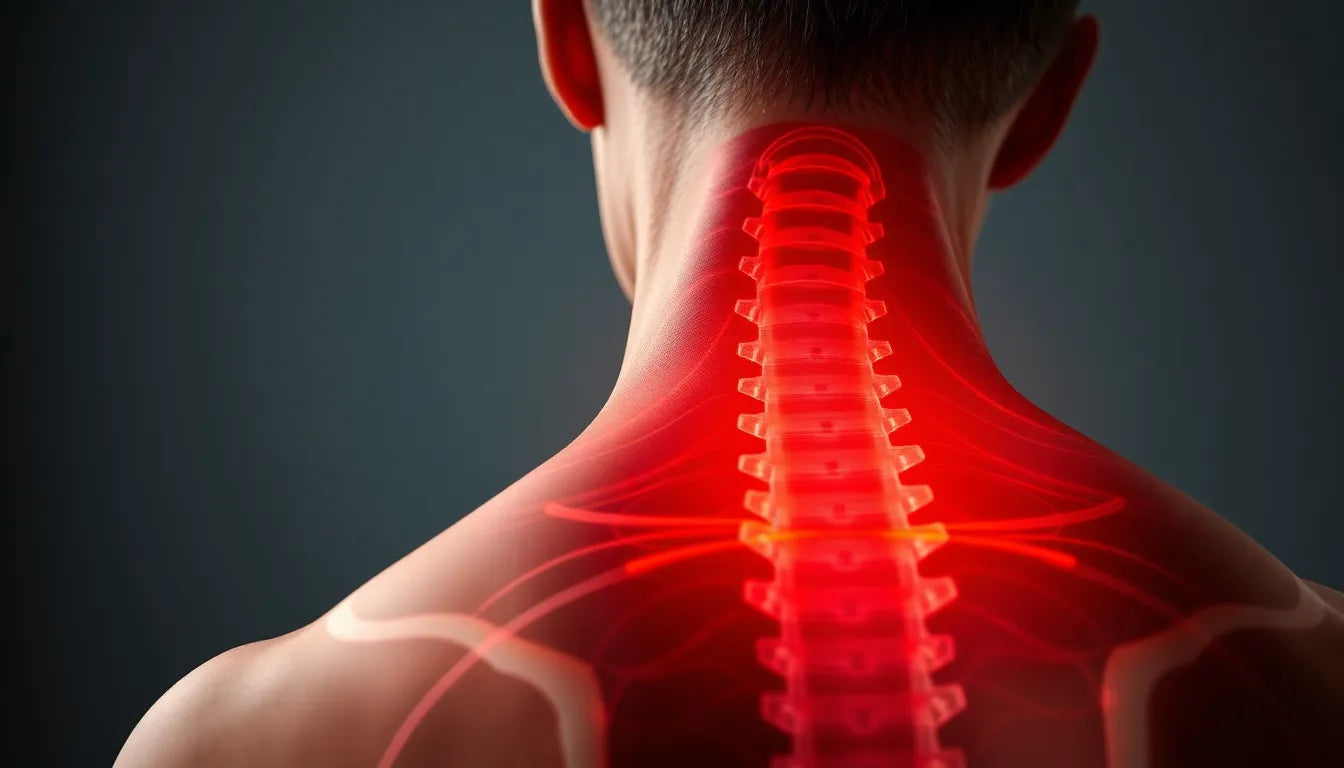Lower back strain is a common ailment that affects many individuals, often resulting from activities such as heavy lifting, sudden movements, or maintaining poor posture over time. This condition occurs when the muscles and ligaments in the lower back are overstretched or torn, leading to discomfort and pain. The prevalence of lower back pain is significant, with many people experiencing some form of it during their lives, impacting their daily activities and productivity.
Understanding and addressing lower back strain is crucial for maintaining an active and healthy lifestyle. Targeted exercises play a vital role in alleviating pain and promoting recovery by strengthening the muscles that support the spine, enhancing flexibility, and improving overall back health. By incorporating specific exercises into your routine, you can effectively manage and reduce the symptoms associated with lower back strain.
the role of exercise in pain management
Engaging in specific exercises can be highly beneficial for managing lower back pain. These exercises are designed to strengthen the core muscles, which are essential for supporting the spine and maintaining proper posture. Strengthening the core not only helps alleviate existing pain but also reduces the risk of future injuries.
In addition to core strengthening, incorporating gentle stretching and low-impact aerobic activities into your daily routine can significantly enhance flexibility and mobility. Stretching exercises help to relieve tension in the muscles, while low-impact aerobic exercises, such as walking or swimming, promote blood flow and aid in the recovery process without putting additional strain on the back.
By following a structured exercise regimen, you can improve your back health and overall well-being. This post will provide you with practical, expert-backed exercises that you can easily follow at home. These exercises are designed to be accessible to individuals of all fitness levels, allowing you to tailor your routine to your specific needs and capabilities.
Stay tuned for a detailed guide on effective lower back strain exercises, including step-by-step instructions and tips for incorporating them into your daily life. With commitment and consistency, you can take control of your lower back health and enjoy a more active, pain-free lifestyle.
core strengthening exercises for lower back relief
Strengthening the core is a fundamental step in managing lower back strain. A robust core supports the spine and helps maintain proper posture, reducing the risk of injury. Here are some effective exercises to incorporate into your routine:

Lumbar support belt
Adjustable belt supports and relieves lower back pain during activity or rest.
abdominal tuck
Begin by lying on your back with your knees bent and feet flat on the floor. Focus on tightening your abdomen by pulling it towards your spine. This movement engages the core muscles, supporting the lower back. Aim to perform two sets of 10 repetitions, ensuring you maintain controlled breathing throughout the exercise.
core marching
While still lying on your back with knees bent, lift one knee towards your chest, alternating legs. This exercise not only engages your core but also enhances coordination. Perform two sets of 10 repetitions per leg, ensuring that your movements are smooth and controlled.
pelvic and hip exercises for stability
Strengthening the pelvic and hip muscles can significantly improve stability and support for the lower back. These exercises are simple yet effective:
pelvic lift / hip thrust
Lie on your back with your knees bent and feet flat on the floor. Squeeze your buttocks and lift your hips to form a straight line from your shoulders to your knees. Hold the position briefly before lowering back down slowly. Repeat this movement 10 times to enhance glute and core strength, which are vital for supporting the lower back.
stretching exercises for flexibility and pain relief
Flexibility is crucial for preventing and alleviating lower back pain. Incorporating regular stretching exercises can help relieve tension and improve range of motion:
knee-to-chest stretch
Lie on your back and bring one or both knees towards your chest, holding the position for 15-30 seconds. This stretch targets the lower back and buttock muscles, providing relief from tension. Repeat the stretch 3-5 times, focusing on deep, calming breaths.
child’s pose
Begin on your hands and knees, then gently push your hips back towards your heels, extending your arms forward. Hold this position for 30 seconds, feeling a deep stretch in your lower back. This pose not only stretches the back but also promotes relaxation.
back and core stability exercises
Improving stability in the back and core is essential for reducing the risk of lower back strain. These exercises focus on balance and coordination:
bird dog
Start on your hands and knees, extending one arm and the opposite leg simultaneously, keeping your back straight. Hold the position for a few seconds before switching sides. Repeat this exercise 10 times per side to enhance stability and coordination.
superman
Lie face down with your arms extended forward. Simultaneously lift your arms and legs, keeping your neck neutral. Hold for 5 seconds before releasing. Repeat this exercise 10 times to strengthen the muscles along your spine, providing better support for your lower back.
mobility and flexibility exercises for lower back health
Maintaining mobility and flexibility is key to preventing lower back strain. These exercises are designed to enhance your range of motion:
trunk rotations
Lie on your back with your knees bent and feet flat on the floor. Slowly rotate your knees to one side, keeping your shoulders on the ground. Hold the position for a few seconds before switching sides. Repeat this movement 10 times to improve mobility and flexibility in the lower back region.
leg and hip stretching for comprehensive relief
Stretching the legs and hips can alleviate tension that contributes to lower back pain. These stretches target key muscle groups that support the back:
hamstring stretch
Sit with one leg extended and the other bent. Lean forward gently, reaching towards your toes. Hold the stretch for 15-30 seconds before switching legs. This stretch helps reduce tension in the legs and lower back.
piriformis stretch
While lying on your back, cross one leg over the other and pull the crossed knee towards your chest. Hold the stretch for 15-30 seconds before switching legs. This exercise targets the piriformis muscle, which can contribute to lower back pain when tight.
low-impact aerobic exercise suggestions
Incorporating low-impact aerobic exercises into your routine can promote blood flow and aid recovery without straining the back. Consider activities like walking, stationary cycling, or swimming. These exercises are gentle on the back and help maintain cardiovascular health while supporting the recovery process.
incorporating exercises into your daily routine
Developing a consistent exercise routine is crucial for managing lower back strain effectively. Begin by setting aside a specific time each day dedicated to your exercises, ensuring a balanced mix of stretching, strengthening, and low-impact aerobic activities. A well-rounded routine not only targets the muscles directly involved in supporting your lower back but also promotes overall physical health.

Men's Posture Shirt™ - White
Patented NeuroBand™ technology helps reduce back pain and supports posture all day.
Start with gentle stretching exercises to warm up your muscles, followed by core strengthening and stability exercises. Incorporate aerobic activities like walking or swimming to enhance cardiovascular fitness and promote blood flow, aiding in recovery. Listen to your body and adjust the intensity and duration of exercises based on your comfort level. It's essential to avoid overexertion, which can exacerbate pain or lead to new injuries.
when to seek professional help
While regular exercise can significantly alleviate lower back pain, there are instances where professional guidance is necessary. If you experience persistent pain, severe discomfort, or any new symptoms, it is crucial to consult a healthcare provider. A medical professional can provide a comprehensive assessment and recommend personalized treatment options, ensuring your safety and well-being.
Additionally, if you are unsure about the correct technique for any exercises or if they cause increased pain, seeking advice from a physical therapist can be beneficial. They can guide you through modifications and ensure you are performing exercises safely and effectively.
frequently asked questions
how often should I do these exercises?
Aim to practice these exercises daily or at least 3-4 times a week. Consistency is key to building strength and flexibility, but always listen to your body and adjust as needed based on pain levels and comfort.
can these exercises prevent future back strains?
Yes, regular practice of these exercises can strengthen core muscles, enhance flexibility, and improve posture, all of which can reduce the risk of future lower back strains.
what if the exercises increase my pain?
If you experience increased pain during or after exercises, stop immediately and consult a healthcare professional. They can help ensure you are using the proper technique and rule out other underlying issues.
are these exercises suitable for all ages?
These exercises are generally suitable for all ages, but older adults or individuals with pre-existing conditions should consider modifying exercises as needed and consult with a healthcare professional before starting a new exercise regimen.
do I need any special equipment?
No special equipment is required for these exercises. However, using a yoga mat can provide additional comfort and support during your routine.
Kilder
- Journal of Orthopaedic & Sports Physical Therapy. (2021). "Guidelines for Managing Low Back Pain."
- Mayo Clinic Health System. (2021). "Low Back Pain Exercises."
- American Academy of Orthopaedic Surgeons. "Low Back Surgery Exercise Guide."
- American Academy of Orthopaedic Surgeons. (2017). "Rehabilitation Protocol for Spine."
- Veterans Health Administration. (2022). "Managing Low Back Pain Booklet."
- Hospital for Special Surgery. "Exercises for Lower Back Pain."
- Versus Arthritis. "Back Pain Exercise Sheet."
- National Center for Biotechnology Information. "Exercise Therapy for Low Back Pain."























